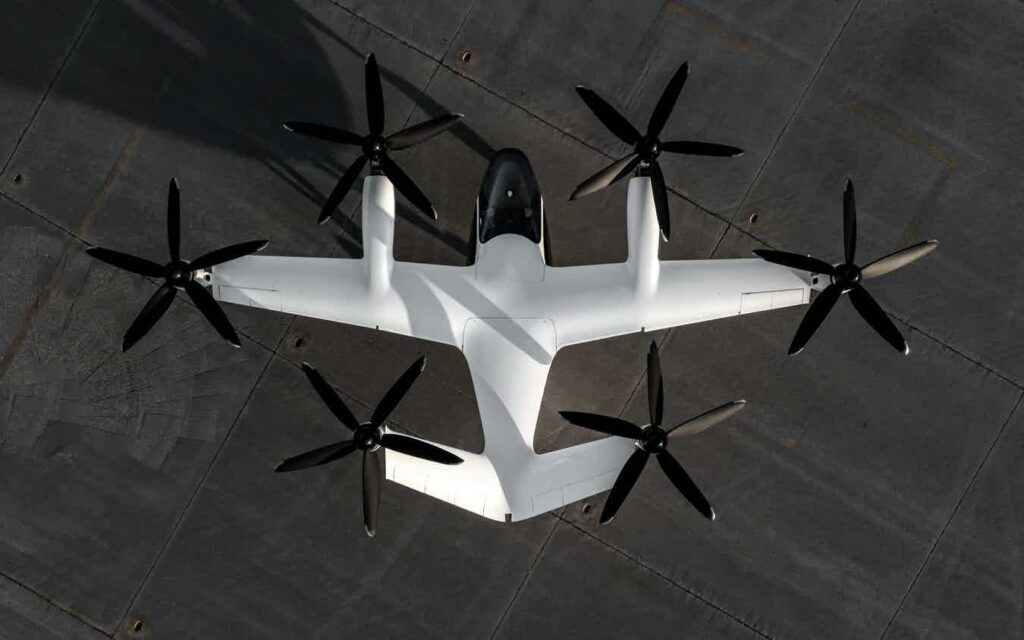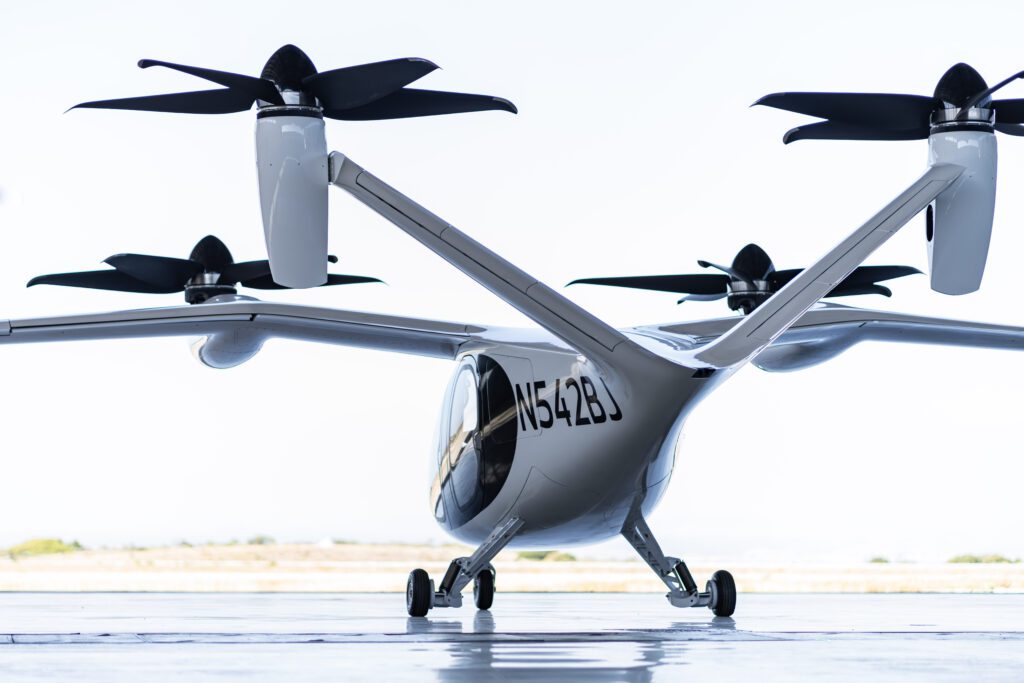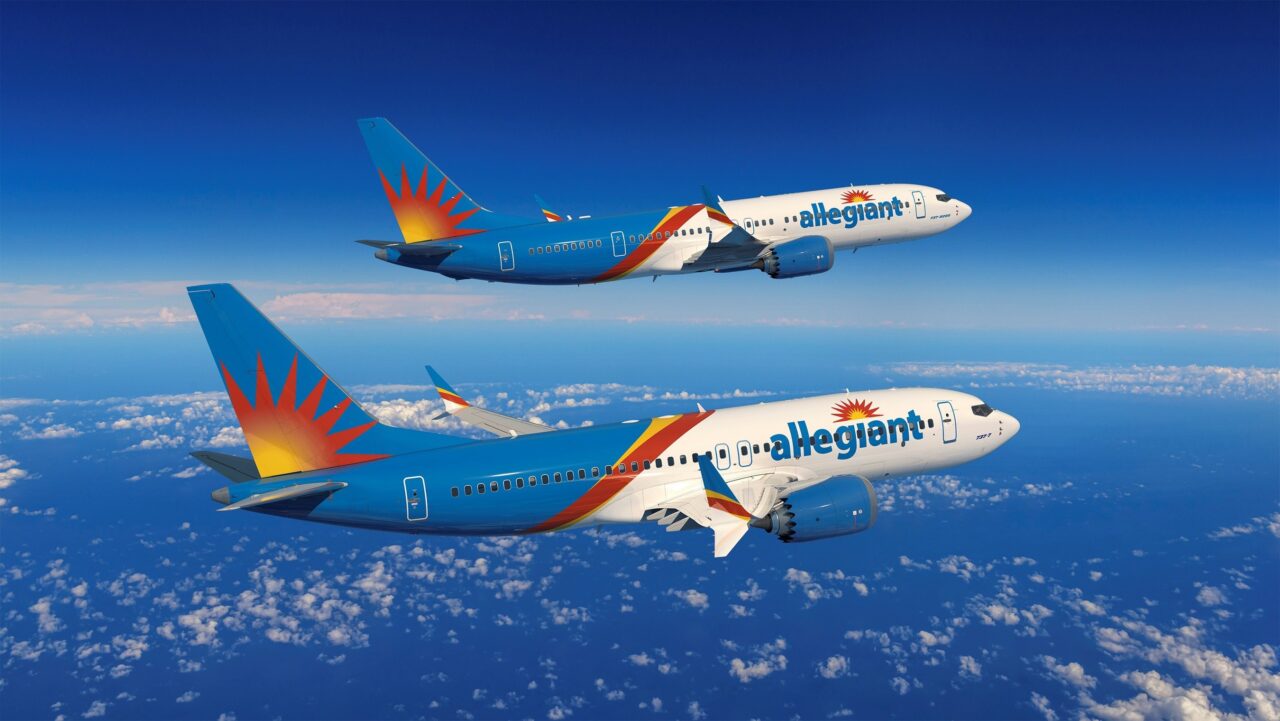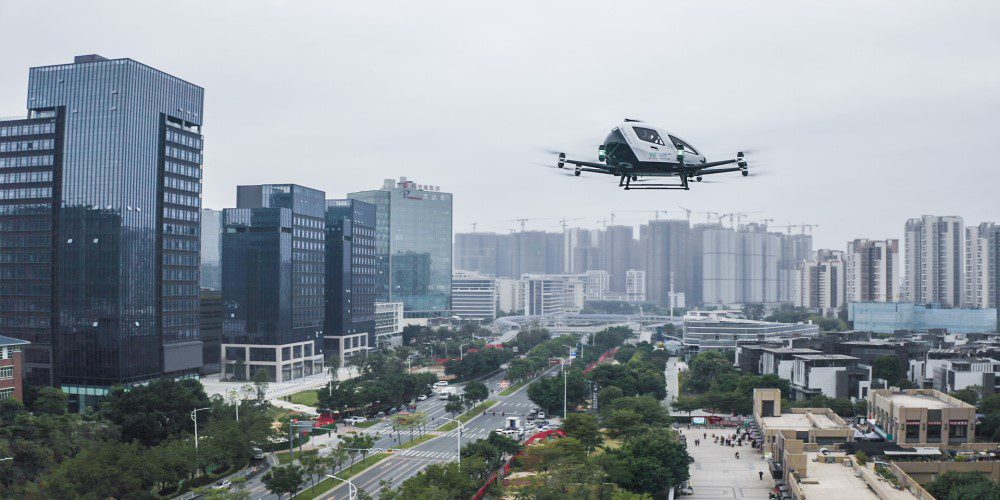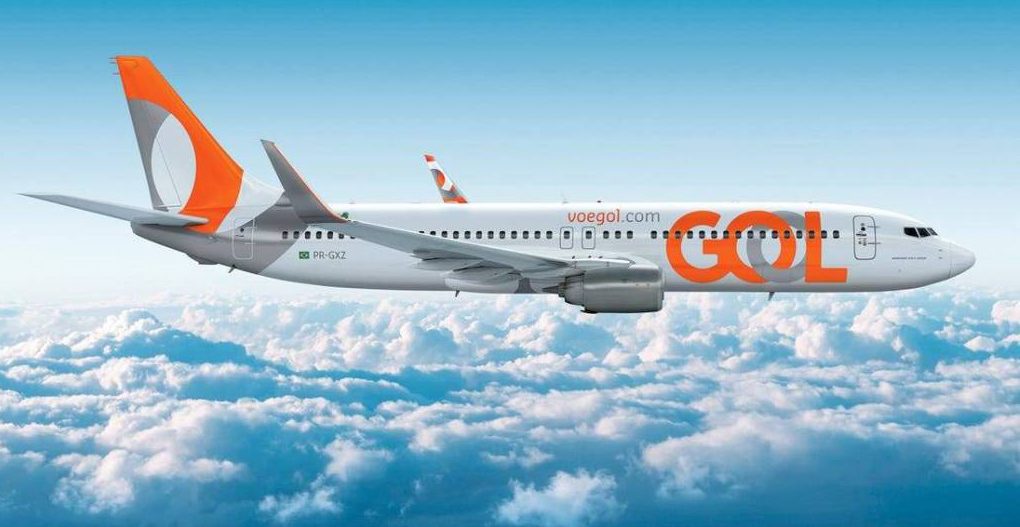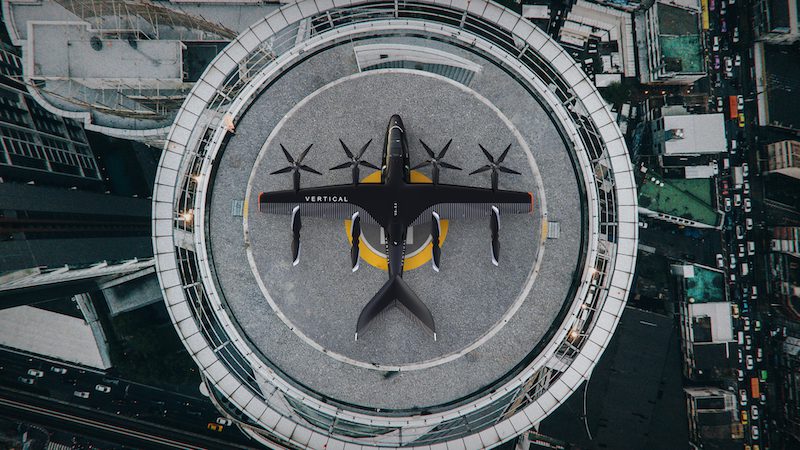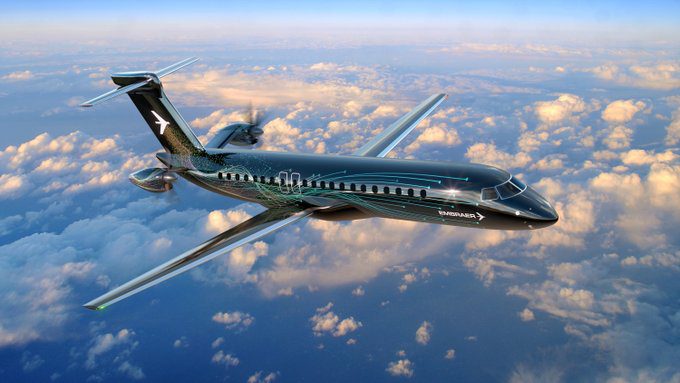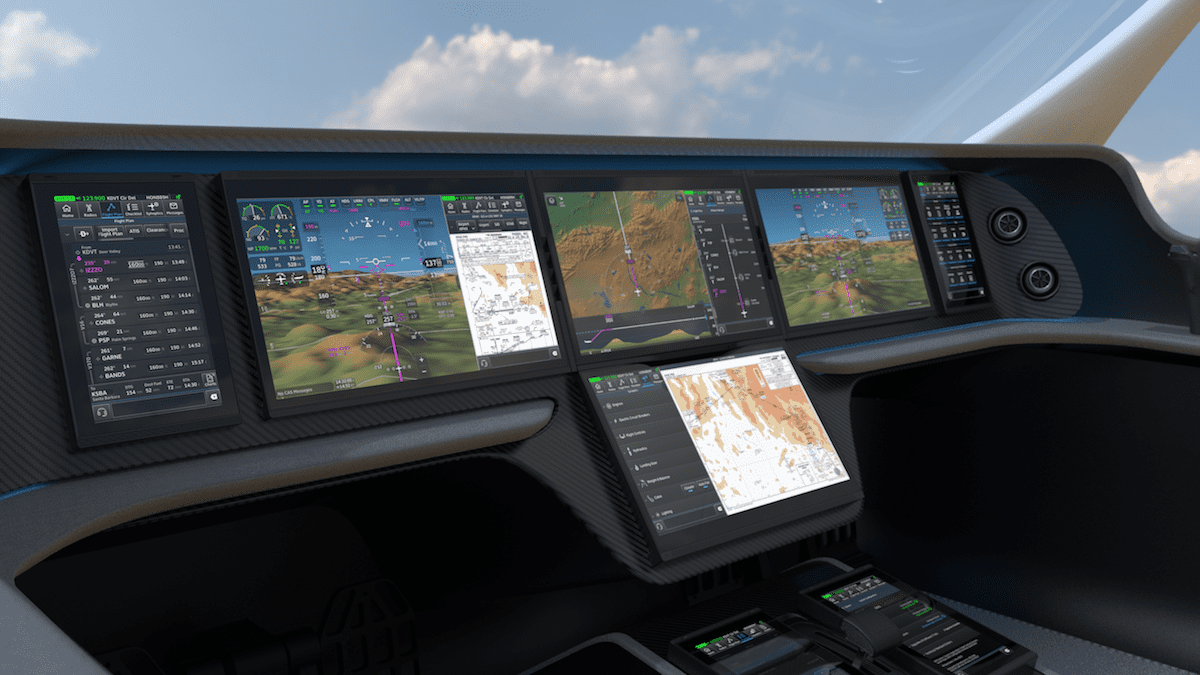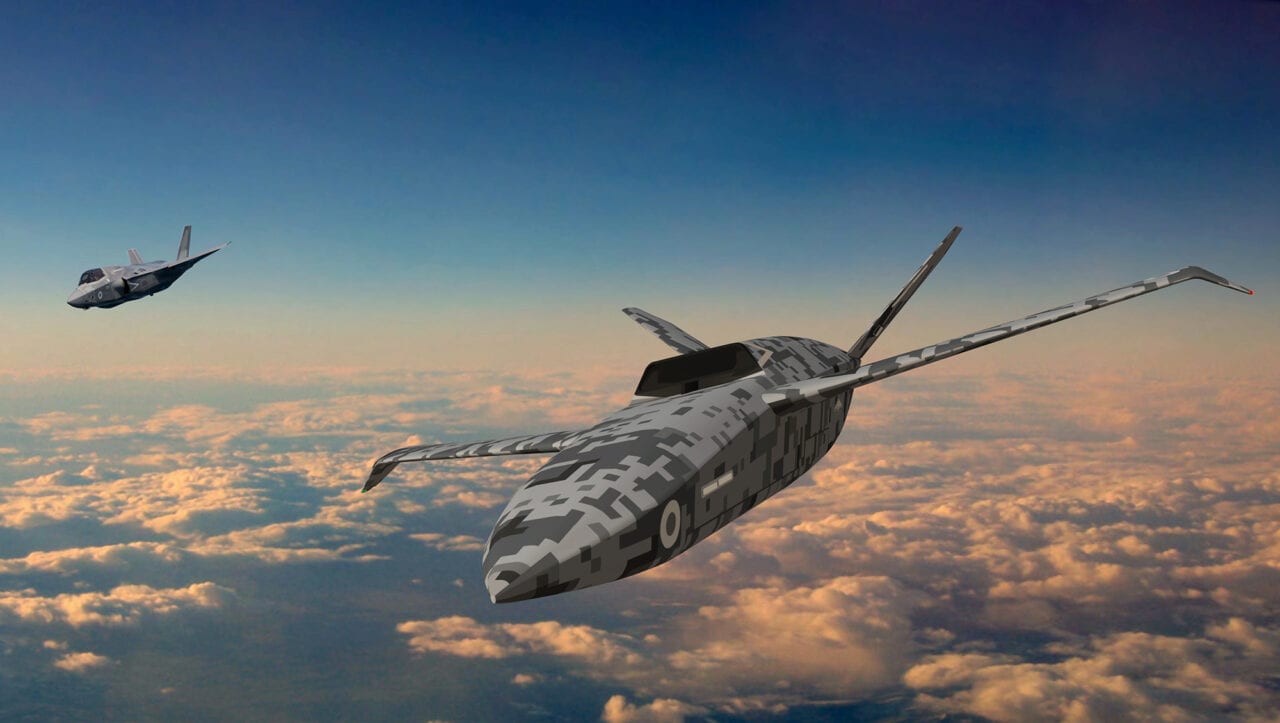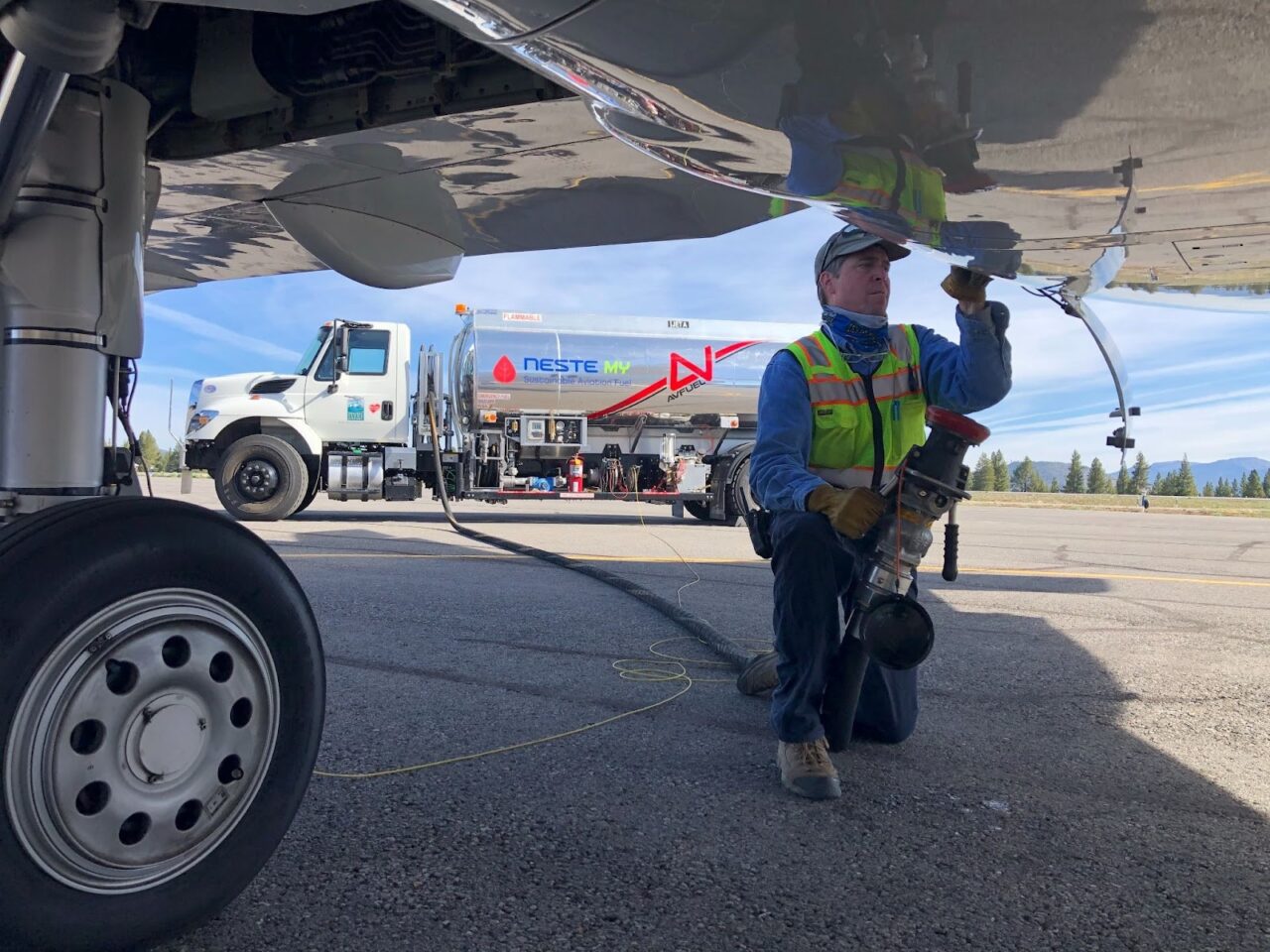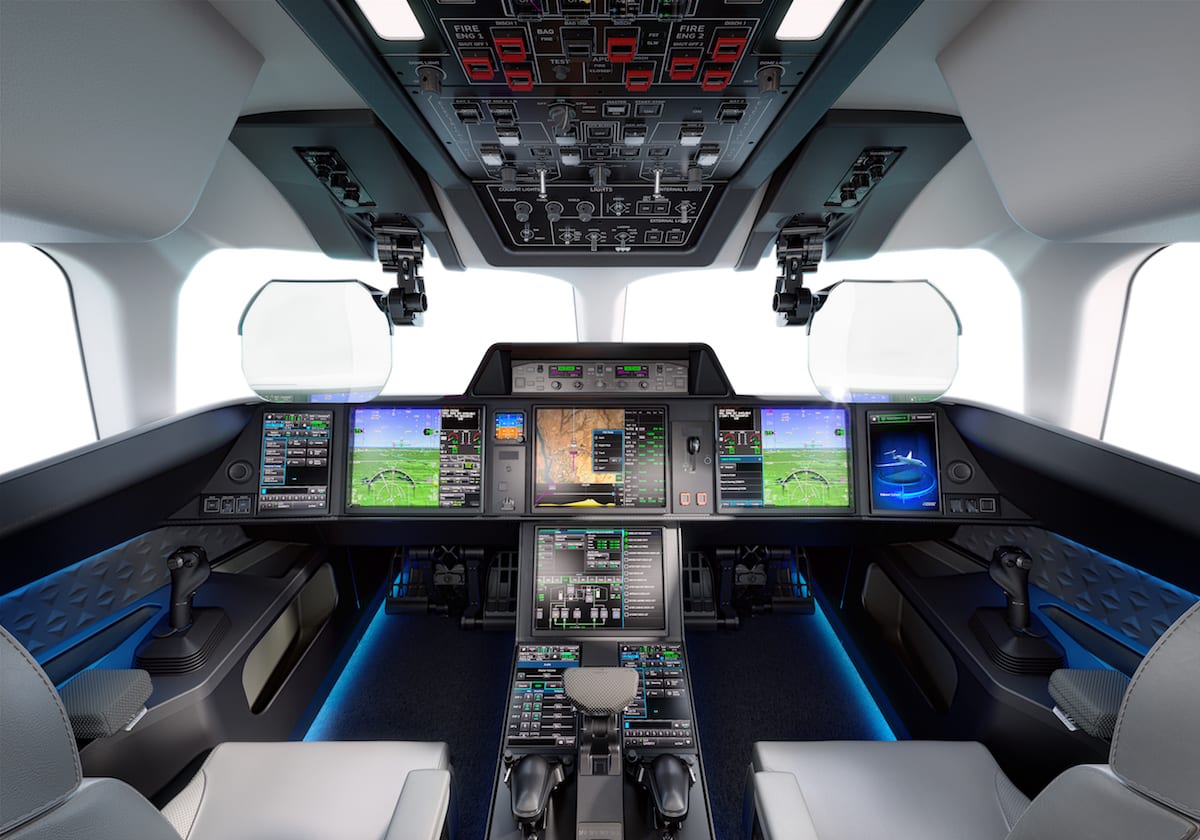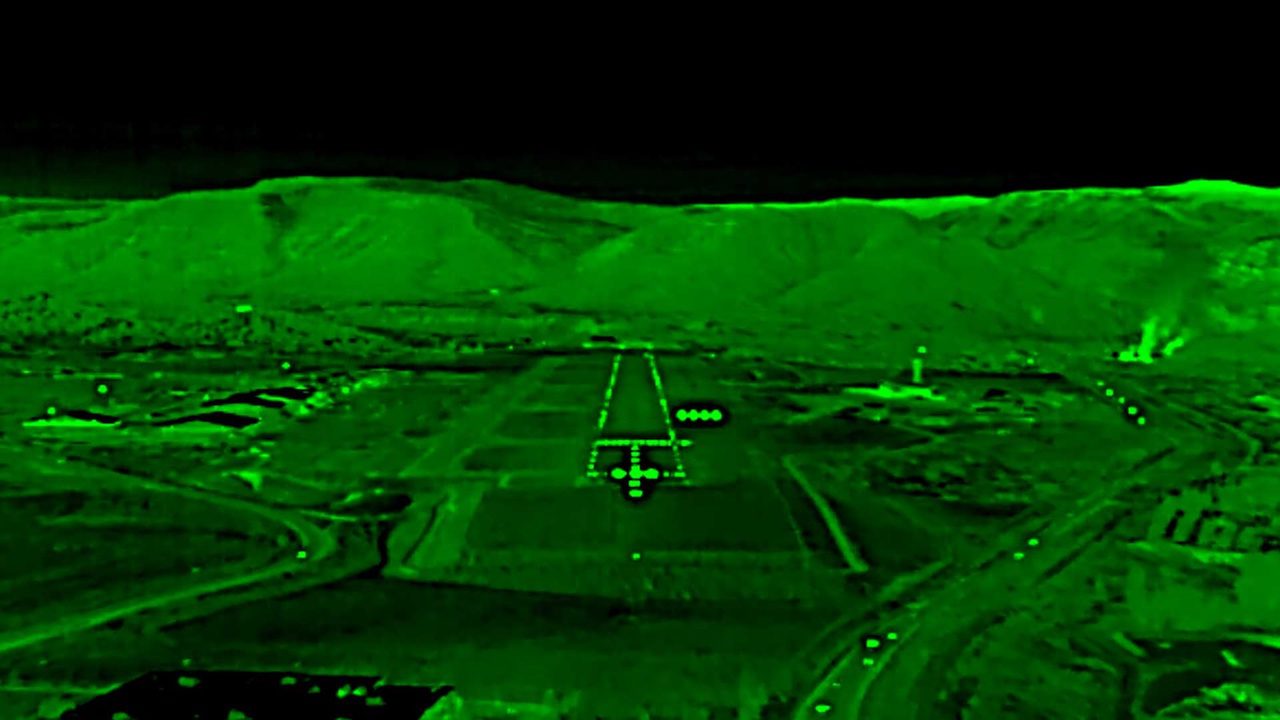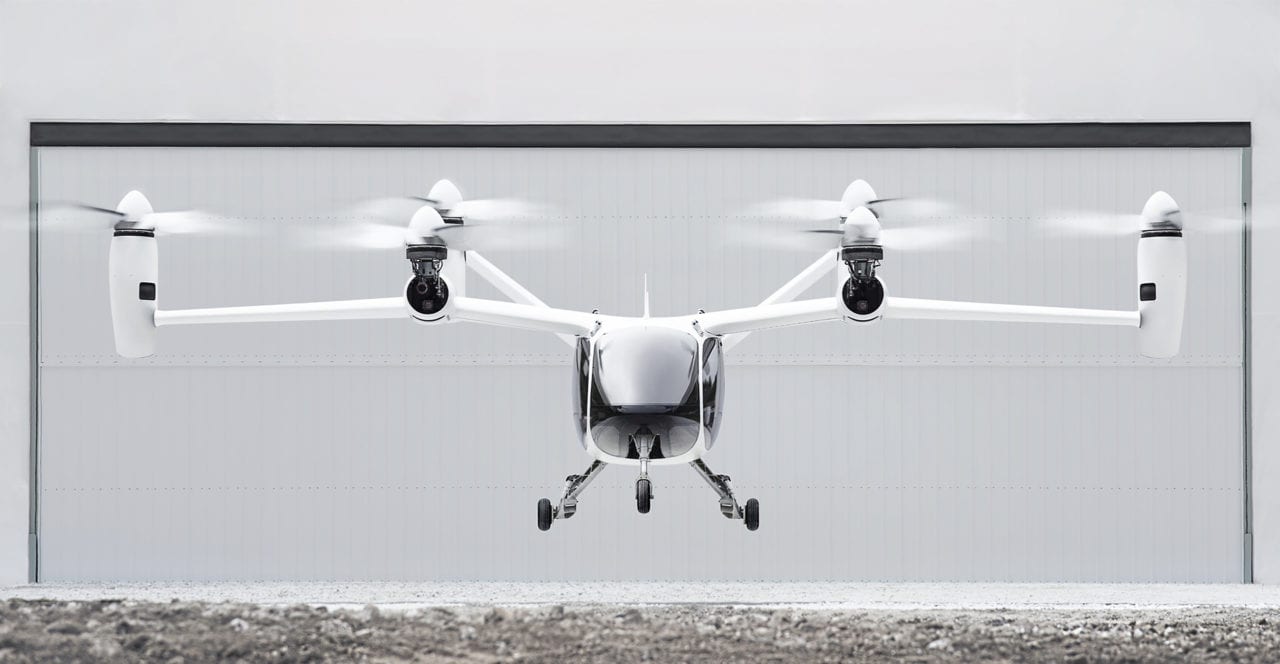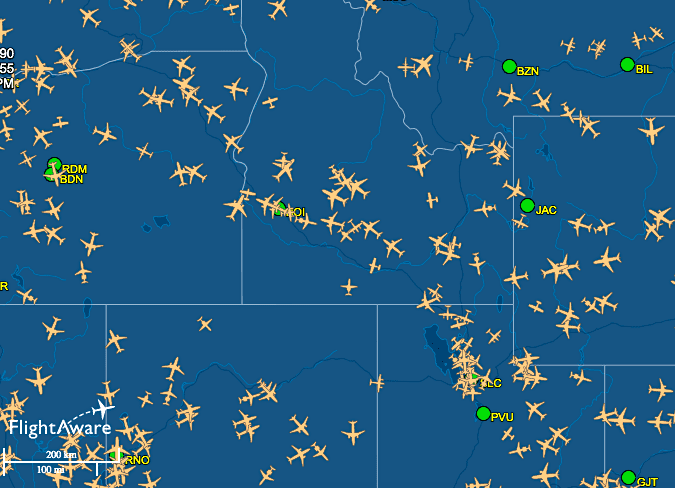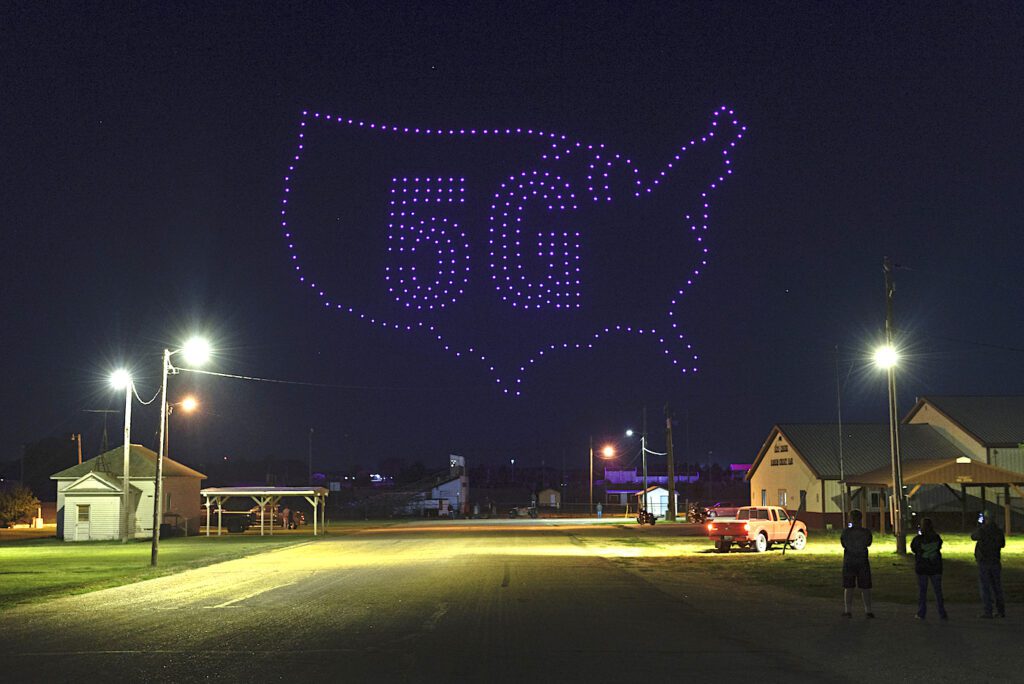

T-Mobile used 300 drones to light up the sky over Lisbon, N.D., celebrating the expansion of its 5G network to hundreds of small towns across America earlier this year. Other wireless network providers, including AT&T and Verizon, have planned to launch 5G networks that operate in a radio-frequency spectrum band that could present interference issues for signals used by aircraft radio altimeters in an adjacent band. (Dan Koeck/AP Images for T-Mobile)
The Federal Aviation Administration (FAA) on Thursday issued its latest regulatory policy statement concerning potential interference issues facing aircraft radar altimeter systems two weeks ahead of the planned launch of new 5G C-Band wireless networks. A Dec. 23 Special Airworthiness Information Bulletin (SAIB) published by the agency asks “radio altimeter manufacturers, aircraft manufacturers, and operators” to voluntarily participate in new testing and assessment of the altimeters featured on their aircraft “in conjunction with federal authorities.”
“The FAA is working with the aviation and wireless industries to find a solution that allows 5G C-band and aviation to safely coexist. While that work is underway, the FAA alerted operators that Notices to Air Missions (NOTAMs) may be issued to restrict operations in areas where 5G interference is possible. It also provides additional information about aircraft systems that could be affected,” the agency said in a statement Thursday.
Separate requests were also issued by the FAA in its SAIB for radio altimeter suppliers, airlines and aircraft manufacturers to provide information about any interference issues they observe while flying or testing and assessing the performance of their respective altimeter systems. A new Safety Alert For Operators (SAFO) was also published by the FAA on Thursday in an effort to provide further guidance on how new NOTAMs will identify the geographic areas where certain operations requiring a radio altimeter are prohibited in the presence of 5G C-Band signals.
Ahead of the planned Jan. 5 debut of 5G C-Band networks, aviation industry leaders have stated that more time is needed to establish a long-term resolution to the potential interference issues that this unique new form of U.S.-based 5G connectivity presents to aircraft radar altimeters. On Dec. 7, the Federal Aviation Administration (FAA) published new airworthiness directives (ADs) that will prohibit certain types of advanced fixed and rotary wing landing procedures that rely on the use of radar altimeter data.
A Dec. 20 letter obtained by Reuters features comments by Boeing Chief Executive Dave Calhoun and Airbus Americas CEO Jeffrey Knittel citing Airlines for America (A4A) analysis that if the latest 5G directive from the FAA had been active in 2019, about “345,000 passenger flights and 5,400 cargo flights would have faced delays, diversions or cancellations.”
The central issue leading to aviation leaders and regulators raising concern is driven by radio frequency spectrum management. On modern commercial and military aircraft, radar altimeters are typically affixed to the bottom of the airframe and transmit radio frequency signals to the ground or terrain. The time that it takes for the the signal to reach the ground and reflect back up to the aircraft is measured by the altimeter as its height above ground, updated on a regular basis, multiple times per second.
Radio spectrum, according to the U.S. Department of Transportation, is divided into different frequency bands that have been allocated for data, voice, and wireless communications used by a variety of different industries. Aircraft radar altimeters operate within 4.2–4.4 GHz, the lower half of which falls within the C-Band—a frequency range from 3.7–4.2 GHz where the combination of the range of signal transmissions and capacity are optimum.
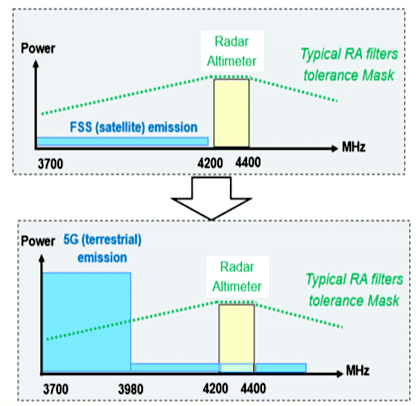
A graphic shown by AVSI’s Andrew Roy during a Dec. 7 NBAA webinar shows power levels of the previous satellite emissions that were occurring in the 3.7–3.98 GHz band that 5G stations in the U.S. will start using next year.
The 5G wireless networks scheduled to be switched on by AT&T and Verizon next month will occur within the 3.7–3.98 GHz frequency range, close to the altimeters. As the FAA indicated in its Dec. 7 AD, while it has heard concerns from airlines, the FAA, and aircraft OEMs over the potential interference issues posed by the deployment of 5G in the C-Band, it has not yet been presented with data or information that shows altimeters are not susceptible to interference.
In a letter sent to current FCC Commissioner Jessica Rosenworcel, six former FCC commissioners dismissed the aviation industry’s claims, stating that the issue was previously resolved.
“We are concerned about the Federal Aviation Administration’s (FAA) recent efforts to revisit the FCC’s 2020 decision to expand flexible use of the C-band for 5G, which followed almost two years of careful review of the public record. The FAA should work with the FCC and the National Telecommunications and Information Administration (NTIA), the federal agency that manages federal spectrum use and speaks for federal stakeholders, to assess and resolve the FAA’s concerns expeditiously, but this debate should not be fought publicly in a way that undermines consumer confidence in the process, nor should it require months of additional delays,” the letter states.
During a presentation given on a Dec. 8 National Business Aviation Association (NBAA) webinar, Andrew Roy, director of engineering services for Aviation Spectrum Resources Inc. (ASRI) said that as one of the groups leading the testing effort on the impact of 5G signal transmissions on radar altimeters, one problem has been a lack of clarity on the geographic locations of 5G C-band base stations and how the antennas on those stations will actually function in terms of beam-forming potentially occurring within areas of airspace used by airplanes and helicopters for critical phases of flight.
Roy also appeared on NBAA’s Dec. 20 edition of its weekly Flight Plan podcast where he further discussed the issue.
“Where is the antenna pointed from the 5G station—is it down at the ground? Is it up? These new 5G antennas are very advanced and very clever,” Roy said. “They can do what’s called beam steering and steer the energy in certain directions electronically to make sure they get the best coverage possible. It’s a very clever system, but it’s very difficult for aviation then to say, well, where are you pointing the beam? This sort of level of detail is what we’ve really been trying to get hold of to make an accurate decision.”

An image borrowed from a Honeywell Aerospace presentation shown by AVSI’s Andrew Roy during a Dec. 7 NBAA webinar, shows the typical position of radar altimeters on commercial and military aircraft.
While the FAA’s new directives prohibit the use of things like enhanced vision system displays to land in low visibility conditions at airports, it does offer radar altimeter manufacturers the option to avoid those restrictions by applying for an alternate means of compliance. This option would require them to develop an alternate means of compliance plan that shows their altimeters are not susceptible to 5G interference.
Clay Barber, principal engineer with Garmin International, was also a guest on the same podcast episode as Roy and stated that applying for an alternate means of compliance at this point is not an option due to lack of clarity, performance data, and information about how the 5G C-Band base stations will function.
“I as Garmin, and Honeywell and Collins as radar altimeter manufacturers, cannot do that at this point because we don’t have the information that we could actually make that case successfully with the FAA,” Barber said.
Even as airlines and other airspace users prepare to adjust to the flight operational landing procedures and limitation requirements imposed on their operations by the FAA’s directives, some are still trying to find a long-term resolution that provides the best outcome for both sides.
In emailed statements to Avionics International, Anthony Rios, president of FreeFlight Systems–a Texas-based supplier of radar altimeters and other avionics systems—said that his company has been researching the issue for several years and could have a solution.
Right now, FreeFlight Systems is in the final stages of the regulatory certification process for a new line of “Terrain Series” radar altimeters that are designed to address potential interference from the 5G C-Band transmissions. He said that the majority of in-service altimeters adhere to Technical Standard Orders (TSOs)—a minimum performance standard for specified materials, parts, and appliances used on civil aircraft—were defined at a time when the frequency bands adjacent to the radar altimeter band were reserved to low power applications and provided little risk to radar altimeter operations.
“The new Terrain Series Radar Altimeters were specifically designed to address potential interference from high power 5G C-Band transmissions adjacent to our lower operating band. Recognizing the effect of high power transmission this close to the radar altimeter, we quickly determined that supplementary, external RF filters were only going to provide limited protection in the frequencies outside of the radar altimeter bands. Instead, a new, clean sheet design would be necessary to address in-band as well as out-of-band interference. The resulting Terrain Series design goes beyond passive RF filters which would only mitigate the out-of-band interference and introduces novel and advanced digital signal processing to achieve high orders of signal rejection within the radar altimeter operating band as well as aggressive attenuation of interference outside the operating band,” Rios said.
Rios, like many others in the aviation industry, acknowledges the benefits 5G connectivity could bring to airlines, airports, and aeronautical data sharing systems or services. Throughout 2021, major U.S. airlines made several announcements about the adoption of new 5G devices for employees.
Earlier this month, for example, Alaska Airlines signed an exclusive 5G service provider agreement with T-Mobile that will leverage the wireless network provider’s 5G network—that operates in the lower 2.5 GHz band—”to optimize every aspect of the customer experience from ticketing to check-in, on-time departures and arrivals, baggage tracking, and much more,” according to a Dec. 6 press release. In April, AT&T announced a new agreement with Delta Air Lines to supply their flight attendants with 5G iPhones and followed up several months later with a similar deal to provide Delta’s pilots with 5G iPads.
JetBlue also highlighted the 5G capabilities of the new iPad Pro tablets that their pilots will be adopting in a July 13 press release.
Rios said that FreeFlight’s approach to mitigating the potential 5G C-Band interference is to develop their latest altimeters based on modeling of how potential interference occurs within in-flight scenarios.
“We have modeled real-world test environments which take into consideration the relative interference between 5G C-band transmit power versus the intentional reflected signals that radar altimeters use to determine distance/height above ground. For example, at 200 feet, the return signal from the Terrain series transmission will be stronger than the return signal at 2,000 feet. Therefore, 5G interference can be more overwhelming at 2,000 feet than at 200 feet. Our test environment accounts for these signal levels at different heights and then injects 5G interference to see where our altimeter becomes unusable,” he said.
Similar to the U.S. airline industry’s ongoing adoption of 5G-enabled mobile devices, Rios believes a long-term resolution will eventually emerge.
“The Lower C-Band where radar altimeters operate works well for broadband telecommunications, and it has been clear for some time that around the world high powered broadband transmissions were going to be allowed closer to the RADALT frequencies, and so we started development of a new altimeter that offered the maximum protection we could engineer into the design,” he said. “There is a lot to learn about C-Band 5G and its effects to radar altimeters. As the 5G transmitters are deployed, the FAA will look to industry working groups to help update standards accordingly.”
The post FAA Issues New Radar Altimeter 5G C-Band Risk Assessment Request to Aviation Industry appeared first on Aviation Today.
—————
Boost Internet Speed–
Free Business Hosting–
Free Email Account–
Dropcatch–
Free Secure Email–
Secure Email–
Cheap VOIP Calls–
Free Hosting–
Boost Inflight Wifi–
Premium Domains–
Free Domains














